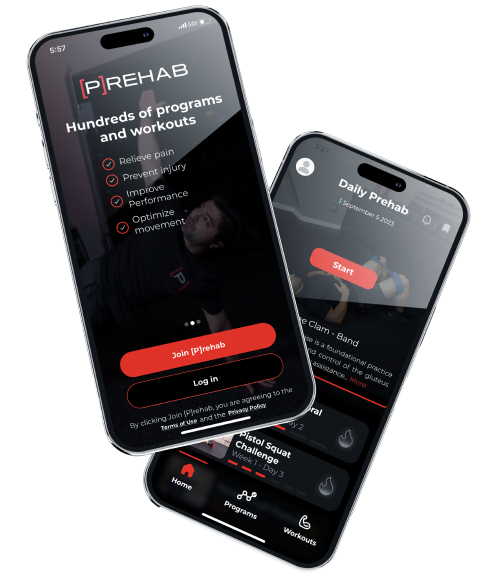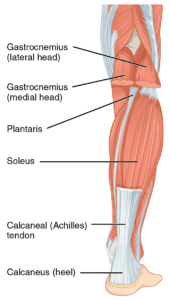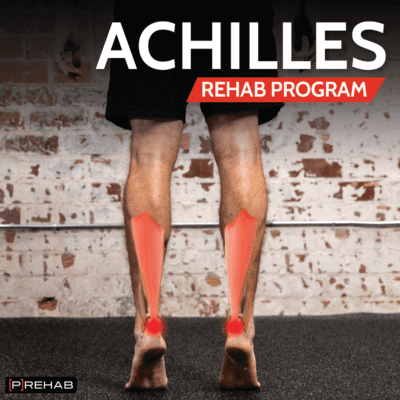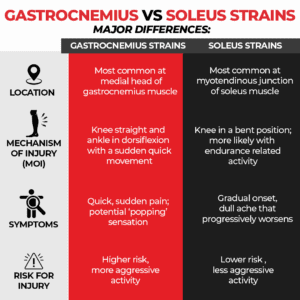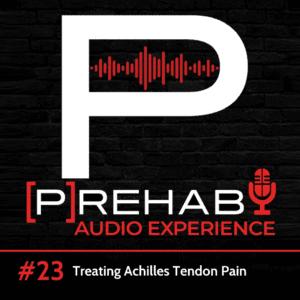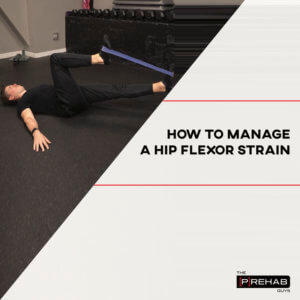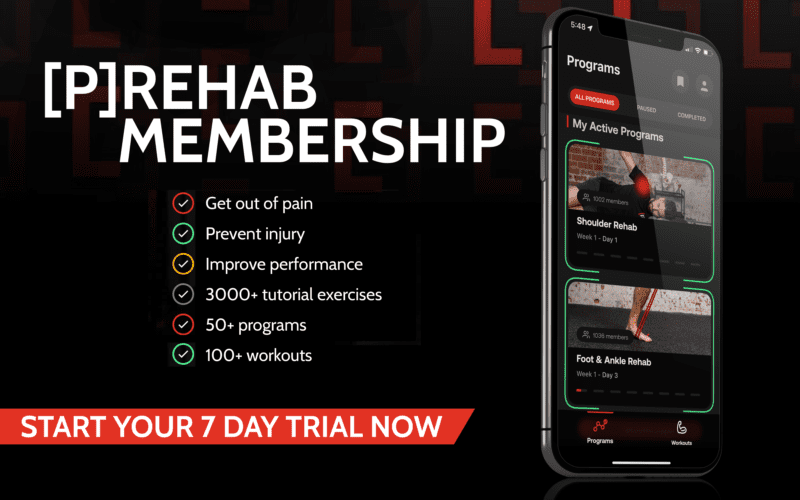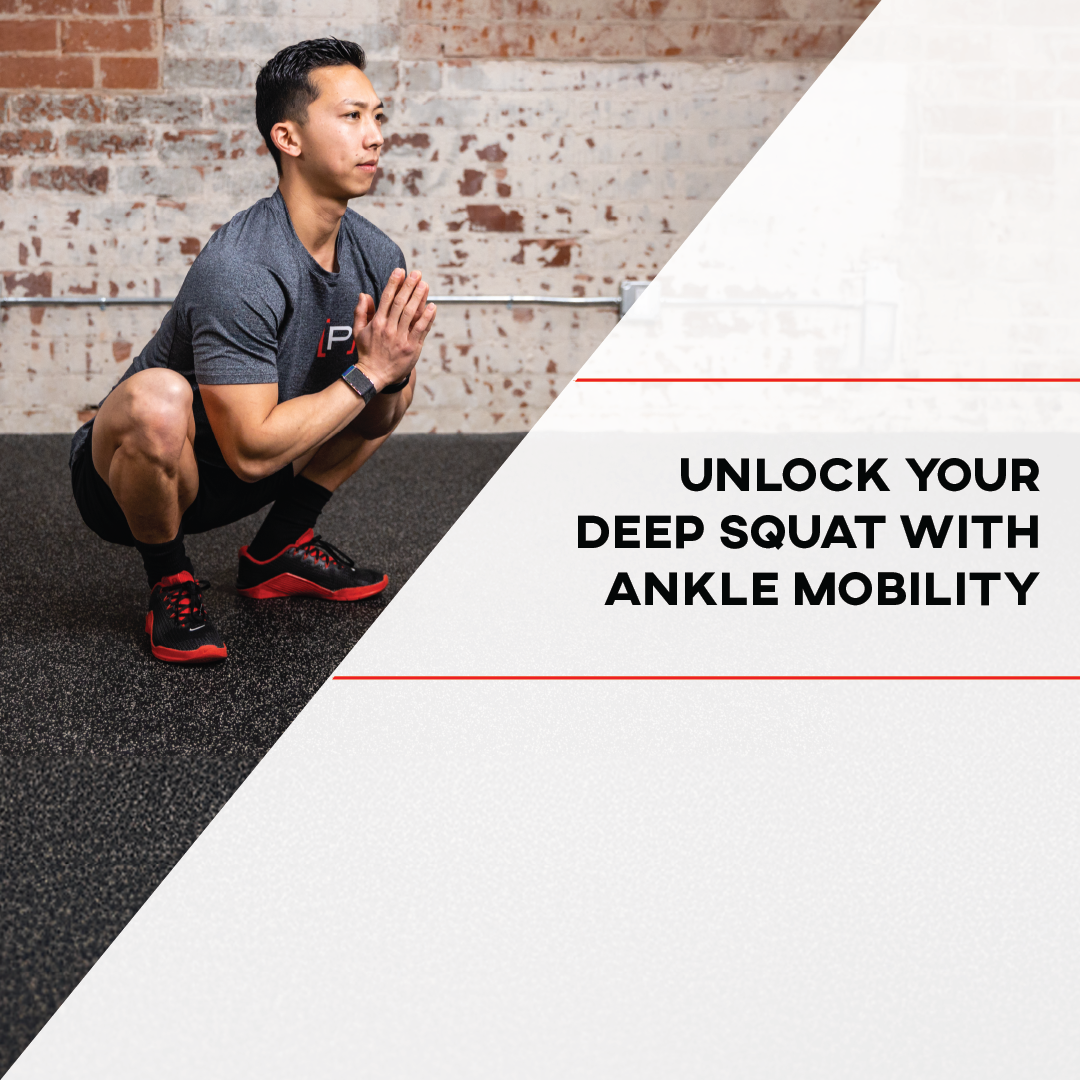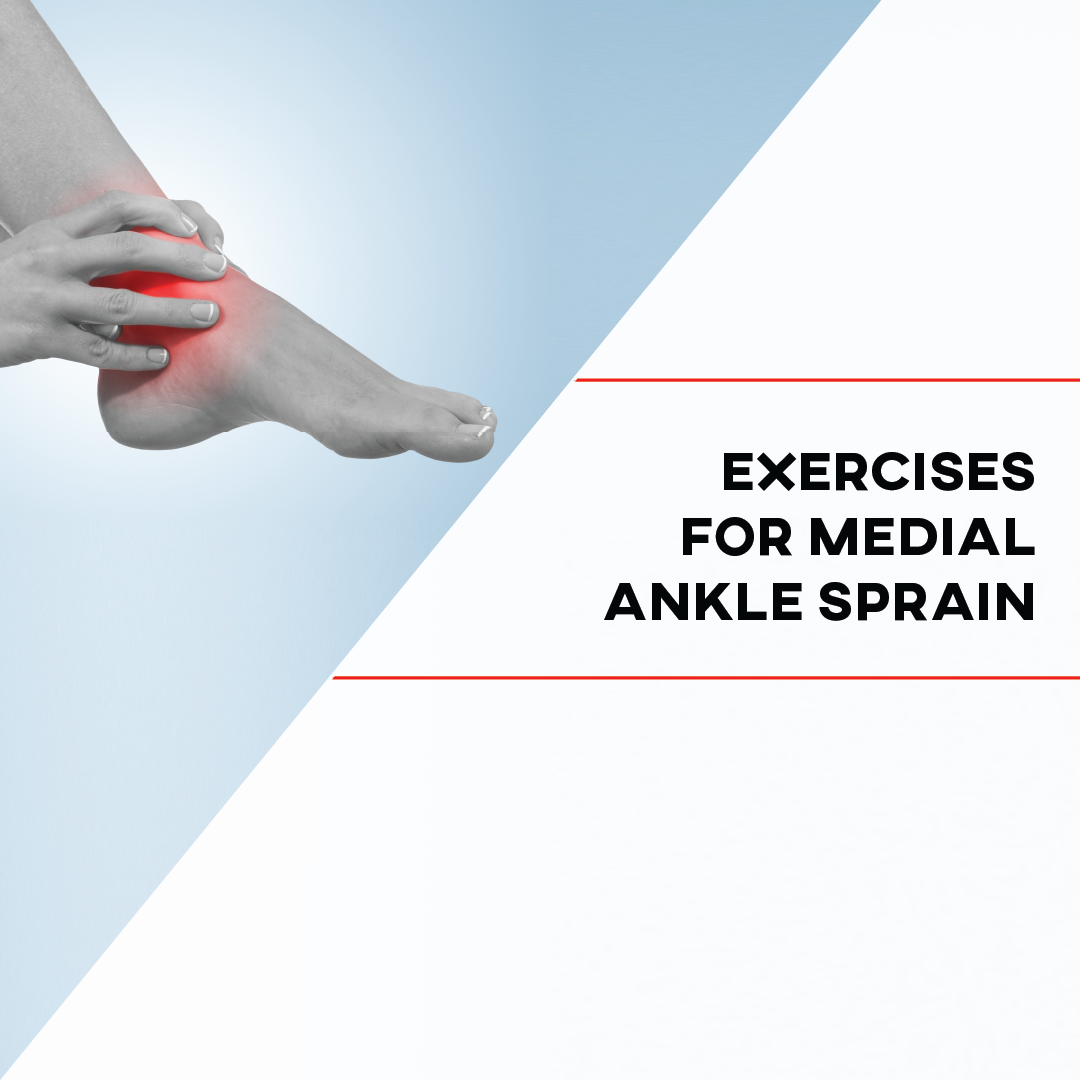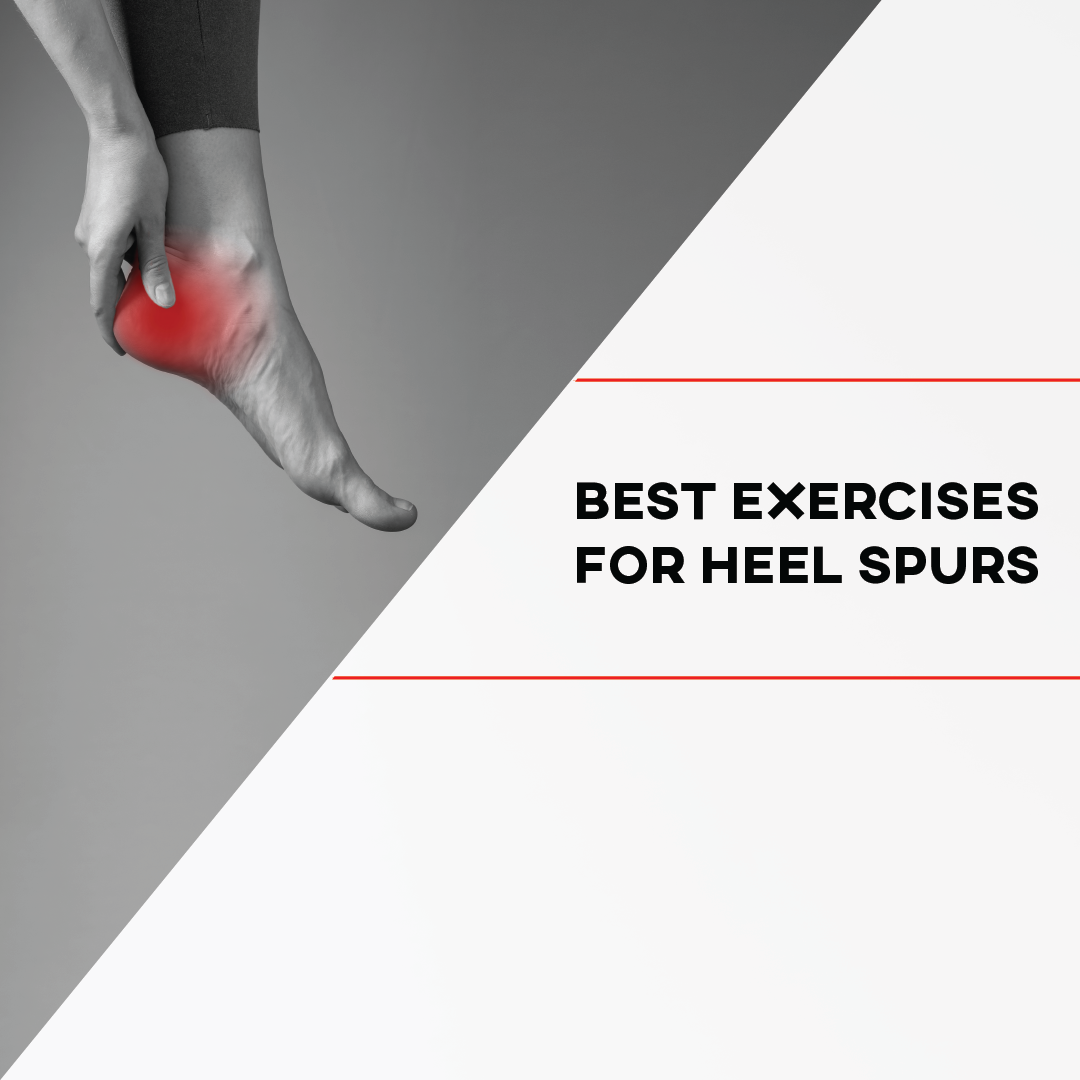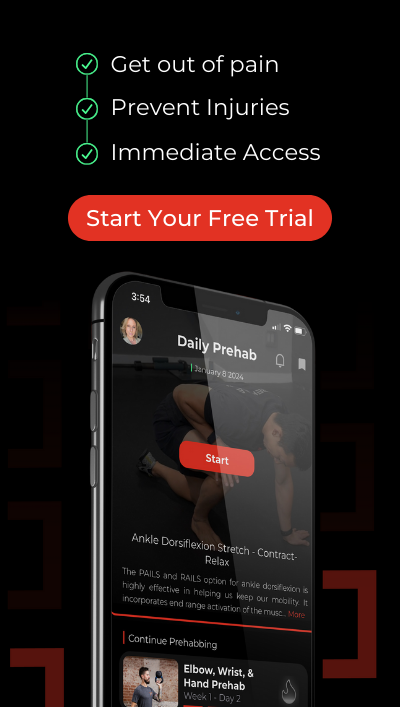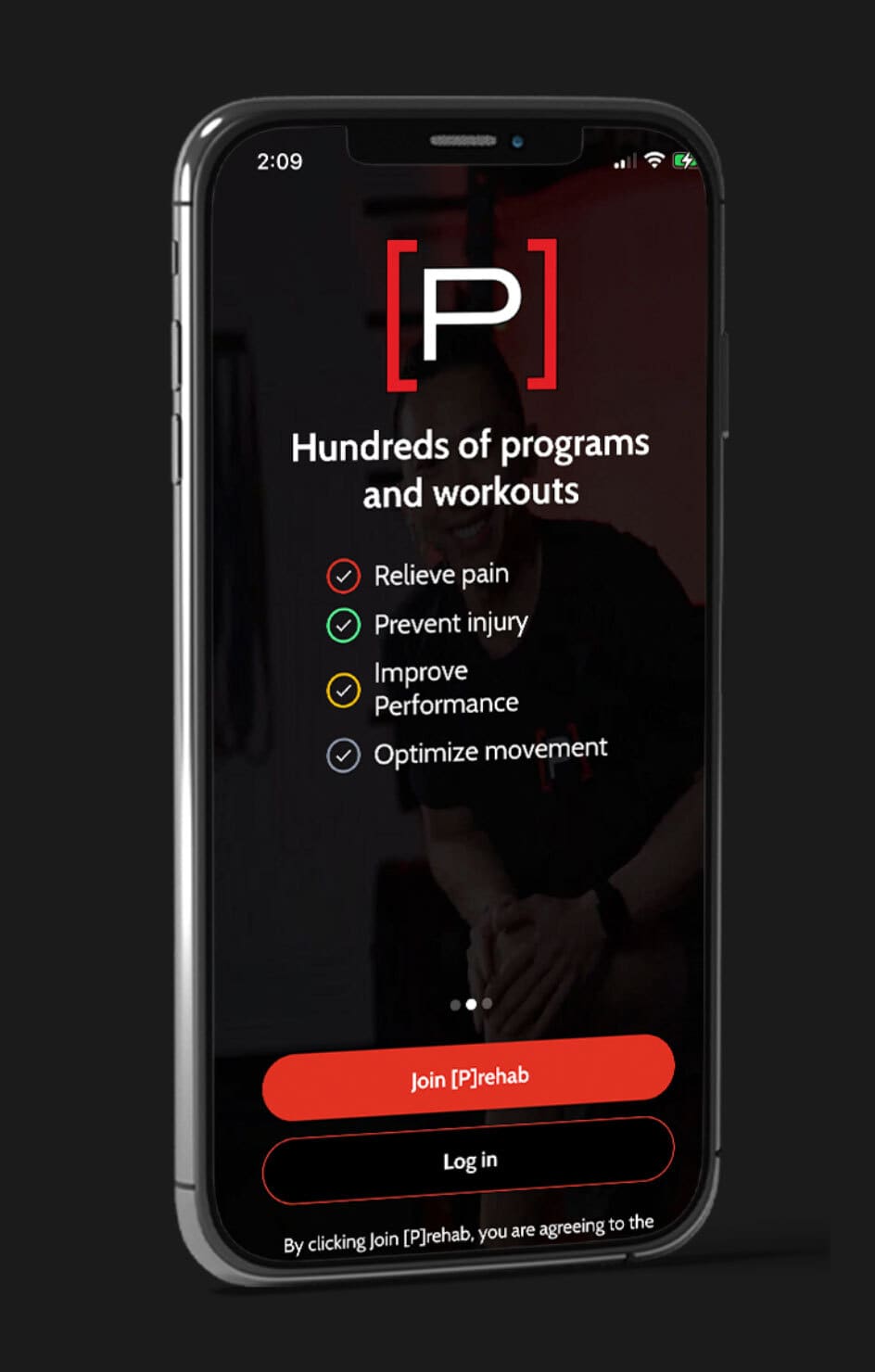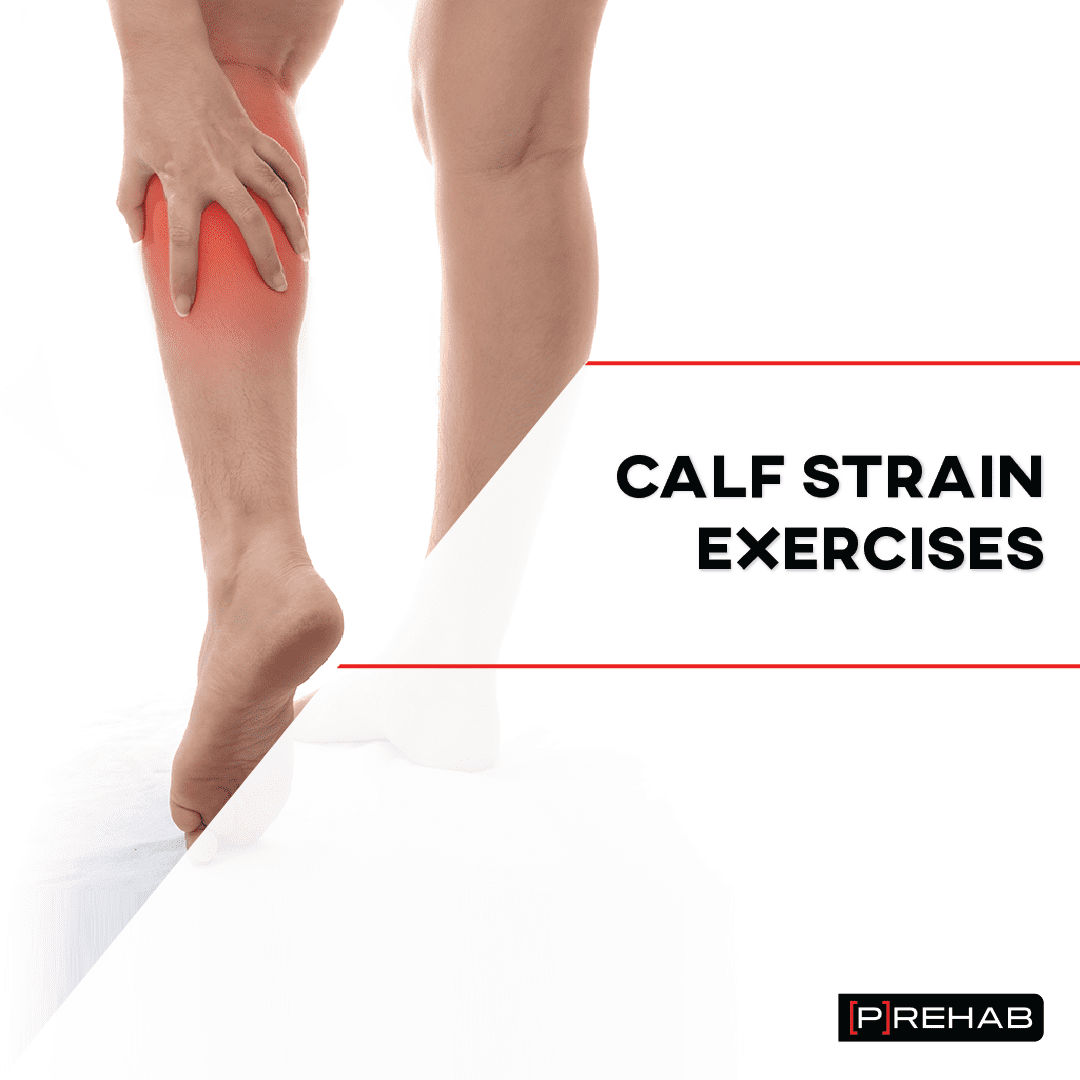
Tweak your calf after some physical activity? Maybe you have pain behind your knee or right in the muscle belly of your calf. No worries, we’re here to help get you back on track by teaching you how to rehab calf strains! Our calf musculature which is situated on the back of our lower legs consists of three muscles, and can often be subject to injury if they are under too much load and/or not appropriately strengthened! Various calf strains are often seen in runners, tennis players, other athletic populations, and even weekend warriors. Follow along in this article as we break down exactly what this injury is, as well as how to perform calf strain exercises!
Understanding The Calf Muscle Complex
The ‘calf muscle’ is actually a complex of 3 muscles, which include the gastrocnemius, soleus, and plantaris. These muscles each travel down the back of the lower leg and join the Achilles tendon, which then inserts onto our calcaneus (heel bone). The gastrocnemius muscle has two heads: a medial head and a lateral head, which is situated superficial to the deeper soleus muscle. What is unique about the gastrocnemius in contrast to the soleus is that it is a 2-joint muscle, as it crosses both the knee joint as well as the ankle joint. This is similar to the rectus femoris at our hip, which acts as a hip flexor and knee extender.
Calf Muscle Anatomy
The gastrocnemius muscle is cut in this picture to show the deeper soleus and plantaris muscles on the back of the lower leg.
What is A Calf Strain
How to rehab calf strains you ask? First, you must understand what the injury is! A strain is an injury to either a muscle and/or tendon, resulting in partial or complete tearing. This is different than a sprain, which is partial or full tearing secondary to injury of a ligament, such as the anterior cruciate ligament (ACL) for example. Calf strains can occur in one of the three muscles that make up the calf complex that was explained above. Let’s break down each of these strains in more detail. For the scope of this article, we will cover gastrocnemius and soleus strains, as plantaris strains are quite rare.
Manage Calf Strains With Our Achilles Rehab Program!
The calf complex and Achilles tendon health go hand-in-hand, you need to focus on both for the best outcomes. If you’re dealing with a calf strain, our Achilles Rehab Program is the perfect fit for you! Click HERE to learn more
Gastrocnemius Strains – The Power Generating Muscle
In the text titled Sports Injuries by Dreddie and David, the authors described that the calf injury was first described in the year 1883 as it was associated with the sport of tennis, thus receiving the name ‘tennis leg’. This particular injury is in relation to the gastrocnemius muscle, with a common mechanism of injury of knee extension (straight knee position) and ankle dorsiflexion. The gastrocnemius is particularly more susceptible to strains due to it crossing 2 joints. In addition, in contrast to the soleus muscle which is more of an ‘endurance’ muscle, the gastrocnemius has an abundance of type II muscle fibers (fast-twitch), which are utilized specifically for speed and power-based activity. Muscle strains are more likely to occur in these types of muscles that are fast-twitch and cross multiple joints.
Common signs and symptoms of a gastrocnemius strain include:
- Feeling something has ‘hit’ the calf
- Potential audible ‘pop’ sensation
- One may not have immediate pain, but as you begin to take steps, the pain will appear and be significant
- Difficulty rising up on toes after injury
- Potential swelling in the calf muscle region
Soleus Strains – The Endurance Muscle
Soleus strains are a bit more difficult to differentiate due to their ‘non-specific’ symptoms and gradual onset. This muscle is also more intimately associated with the Achilles tendon, and sometimes the clinical presentation of these two anatomical regions can closely mimic one another. These musculotendinous injuries are more commonly seen in distance runners. In fact, when we run, our soleus is loaded with 6-8 times our body weight! While the gastrocnemius is more commonly injured with the knee in an extended position, the soleus is more likely to be strained with the knee in a flexed position.
Research by Balius and Capdevilla discusses that the soleus muscle is made up of 96% type I muscle fibers, which are utilized specifically for endurance-based activity. This is why the soleus is more susceptible to injury with activities like distance running. It can also present itself in the elderly and middle-aged population, especially if poorly conditioned.
Common signs and symptoms of a soleus strain include:
- Non-specific, gradual onset of a ‘dull ache’ sensation behind the lower leg closer to the Achilles tendon
- Pain with resisted plantarflexion (pushing down with foot) while the knee is bent
- Pain that becomes worse with activity and subsides with rest
- May start as tightness and discomfort and become more aggressive with prolonged activity
Major Differences Between Gastrocnemius Versus Soleus Strains
What Do I Do If I Injured My Calf?
The most important first step in rehabbing calf strains is to differentiate which muscle is injured, as management will be slightly different. Once that is established, it is also beneficial to ascertain the severity of the injury. Most calf strains are graded level I through III, with I being a mild strain and level III being complete tearing of the muscle. Most calf strains can be treated conservatively, but with some grade III injuries, these may need to be managed surgically. A physical therapist can initially evaluate you to decipher if you need further consultation after a calf strain. If a complete tear is suspected, a sports medicine physician or orthopedic surgeon may utilize either guided ultrasound or an MRI to assist in a proper diagnosis.
How Is This Different Than an Achilles Injury?
Sometimes, an Achilles tendon injury can be confused for calf strains, and vice versa, due to their intimate association with one another. Achilles tendinopathy starts similar to a soleus strain, with more of a chronic, overuse type of injury. The pain will be lower than the location of the soleus muscle at the Achilles tendon and can either be mid-substance (in the middle of the tendon) or at the location of the insertion point at the heel (calcaneus). An Achilles tendon tear is more similar to a gastrocnemius muscle strain, as this occurs acutely with a specific activity, often in jumping-related sports. A common subjective report of someone feeling they have gotten kicked in the back of their leg is similarly reported with an Achilles tendon tear as well.
To learn more about Achilles tendon pain and how to manage it, listen to our [P]Rehab Audio Experience Podcast below!
LISTEN: ACHILLES TENDON PAIN
How To Rehab Calf Strains: Understanding Progressions
The general principles of treating calf strains are similar to other soft tissue injuries, which include:
- The initial period of relative rest following the POLICE principle
- The POLICE principle follows the simple principles of not only early protection of the injured site but also early loading to facilitate tissue healing
- Early loading of the muscle(s) involved with progressions from
- Isometrics (static contractions),
- To isotonics (full motions),
- And an emphasis on eccentric training (muscle lengthening against gravity) as well as other heavy, slow loading techniques in the later phases
- Return to activity with graded exposure specific to individual demands during the final phase
Other aspects of care that may assist in modulating symptoms include dry needling, foam rolling, instrument-assisted soft tissue massage (IASTM), and other manual therapy techniques by a physical therapist or another healthcare provider. Although these aforementioned interventions are not supported by high-quality evidence, they still may provide some benefit in case-specific situations. To see an example of another common soft tissue injury and how it is managed, read below on how to manage a hip flexor strain!
READ: HOW TO MANAGE A HIP FLEXOR STRAIN
Early Phase Exercises For Calf Strains
Next, we will dive into an example of progressive exercises after a calf strain! Here, we start with the basics of isometrics and isotonics.
Ankle Plantarflexion Isometrics – In Neutral
Sample Achilles Rehab Program Exercise Video
Isometrics are a great place to start after soft tissue injuries. Isometrics are static contractions of a muscle, that will promote early facilitation, blood flow, and an analgesic effect to modulate some pain an individual may be experiencing.
- HOW: In a comfortable sitting position with your feet out in front of you, place a resistance band around the balls of your foot. Keep your foot in a neutral position, with the toes pointed straight up and your ankle at a 90 deg right angle. This is your starting position. Slowly pull on the resistance band to increase the resistance but do not let your ankle move. The more you pull on the band, the harder it will be to maintain your ankle position.
- FEEL: You should feel the muscles in your calf behind your lower leg working.
- COMPENSATION: Do not let the ankle move!
Calf Foam Rolling
Foam rolling of the calf complex can be beneficial in the early phase to enhance blood flow and start to mobilize the tissue that is irritated from the injury. Be sure to listen to your body and not push into significant symptoms of pain; however, some mild discomfort that is tolerable can be expected in the early phase with this technique.
Heel Raise Isometrics
Sample Achilles Rehab Program Exercise Video
Heel raises with the knee extended will be activating the gastrocnemius, whereas heel raises with the knee bent will isolate the soleus.
The Prehab membership is the anti-barrier solution to keeping your body healthy. Access state-of-the-art physical therapy, fitness programs, and workouts online in the comforts of your own home or gym! Taking control of your health with exercise & education from the palm of your hand has never been easier. Get access to 50+ programs, 100+ unique workouts, and 3000+ exercises to build your own workout routines. Trial it for free, and learn how to get out of pain, avoid injury, and optimize your health with [P]rehab!
Middle and Later Phase Exercises
Ready to take on some higher level exercises? Check these out!
Single Leg Heel Raise
Sample Achilles Rehab Program Exercise Video
The next step after isometrics and double leg exercises is isotonics, which is going through the full motion of muscle shortening (concentric) and lengthening (eccentric), as well as single limb exercises!
Pogos – Wall Support
Sample Achilles Rehab Program Exercise Video
Progressing to plyometric based movements is vital for calf strain rehab, especially for the gastrocnemius, as this muscle has abundant type II muscle fibers, which are utilized for power-based movements such as jumping or sprinting! Read more about plyometric exercise progressions HERE!
Closing Thoughts
Calf strains have a good prognosis and people often make a full recovery! Generally speaking, strains can vary in recovery times from a couple of weeks up to several months if there is a more significant injury. The first step after this injury is to ensure you receive a proper diagnosis, as the calf muscle is actually ‘3 muscles in one’, and therefore, you must establish which one of these muscles has been insulted. From there, a physical therapist can help you optimize your recovery with appropriate exercise and activity modification. If you’re looking for a program to teach you how to rehab calf strains immediately, check out our calf rehab program!
Take Control of Your Calf and Achilles Health
The Achilles is the strongest tendon in the body! It may not feel that way currently but we promise you that it will. The achilles anchors down that powerful calf musculature complex and works as a spring to make walking and running a bit more efficient. The best way to restore the true power of the achilles and regain efficient movement is through guided exercises and education, we’ve got both ready for you!
References
- Fu, F. H., & Stone, D. A. (2001). Sports injuries: Mechanisms, prevention, treatment. Philadelphia, PA: Lippincott Williams & Wilkins.
- Balius, R., Rodas, G., Pedret, C., Capdevila, L., Alomar, X., & Bong, D. A. (2014). Soleus muscle injury: Sensitivity of ultrasound patterns. Skeletal Radiology, 43(6), 805-812. doi:10.1007/s00256-014-1856-z
- Bryan Dixon, J. (2009). Gastrocnemius vs. Soleus strain: How to differentiate and deal with calf muscle injuries. Current Reviews in Musculoskeletal Medicine, 2(2), 74-77. doi:10.1007/s12178-009-9045-8
About The Author
Sherif Elnaggar, PT, DPT, OCS, SCS
[P]Rehab Head of Content
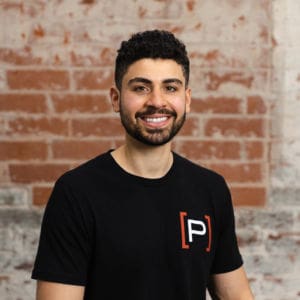 Sherif graduated from Temple University with a Bachelor’s of Science Degree and a concentration in Kinesiology. He then received his Doctorate of Physical Therapy Degree from DeSales University, graduating with honors of the professional excellence award and research excellence award. After his graduate studies, he served as Chief Resident of the St. Luke’s Orthopedic Physical Therapy Residency Program. Sherif is a Board Certified Orthopedic Clinical Specialist. Sherif focuses on understanding how movement impairments are affecting function while also promoting lifestyle changes in order to prevent recurrences of injury. His early treatment interests include running related injuries, adolescent sports rehab, and ACL rehab in lower extremity athletes. He also has been involved in performance training for youth soccer players. Outside of working as a physical therapist, he enjoys traveling, running and cycling, following Philadelphia sports teams, and spending time with his family.
Sherif graduated from Temple University with a Bachelor’s of Science Degree and a concentration in Kinesiology. He then received his Doctorate of Physical Therapy Degree from DeSales University, graduating with honors of the professional excellence award and research excellence award. After his graduate studies, he served as Chief Resident of the St. Luke’s Orthopedic Physical Therapy Residency Program. Sherif is a Board Certified Orthopedic Clinical Specialist. Sherif focuses on understanding how movement impairments are affecting function while also promoting lifestyle changes in order to prevent recurrences of injury. His early treatment interests include running related injuries, adolescent sports rehab, and ACL rehab in lower extremity athletes. He also has been involved in performance training for youth soccer players. Outside of working as a physical therapist, he enjoys traveling, running and cycling, following Philadelphia sports teams, and spending time with his family.
Disclaimer – The content here is designed for information & education purposes only and is not intended for medical advice.
About the author : Sherif Elnaggar PT, DPT, OCS
Related posts
Get Proactive with Prehab
- ✔ Zero wait times, no hidden fees, no barriers to entry!
- ✔ Get out of pain, get stronger, and improve your mobility
- ✔ Access to easy-to-digest physical therapy education videos & resources to learn about your body in the palm of your hand
- ✔ Guidance from trusted Doctors of Physical Therapy
